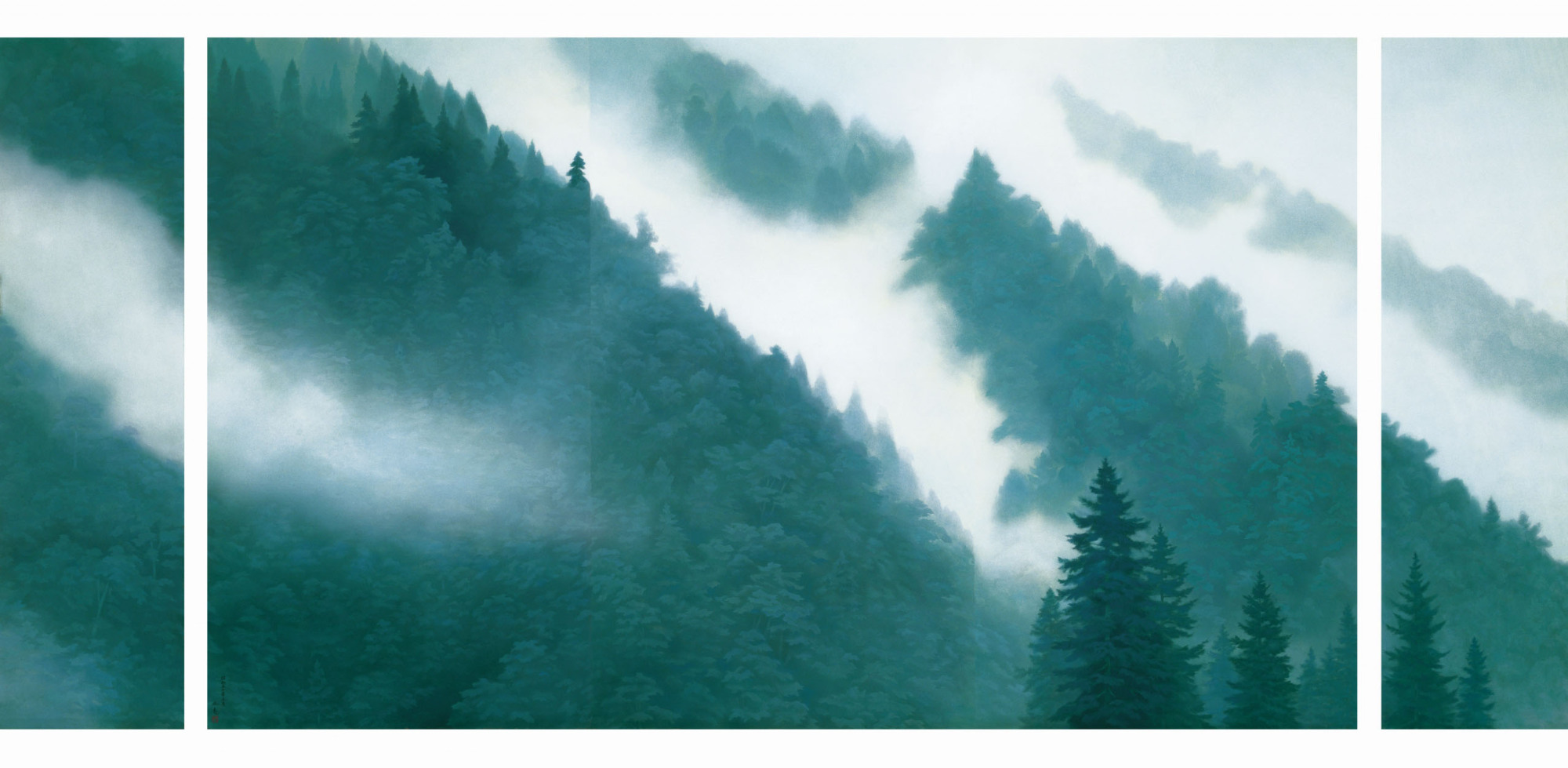"Higashiyama Kaii Retrospective (1908-1999)" at The Museum of Modern Art, Kyoto, actually only presents half of Higashiyama's life. It's a truncated career survey focusing on the mid-to later-life masterpieces of "painting as a form of prayer" by the artist known as "the people's landscape painter."
The popular image of Higashiyama today has its origins in the successful reception of his landscape "Afterglow" (1947), when it showed at the prestigious national Nitten exhibition. Another work, "Road" (1950), is among the most recognized and revered paintings produced in postwar Japan. The exhibition calls these "quintessentially Japanese landscapes," but such works were also examples of Higashiyama's conservative dialogue with European and American abstraction. Distinctive geographical signs were deliberately omitted by the painter, his compositions geometricized and the palette simplified.
Higashiyama was among a number of contemporary painters westernizing nihonga (Japanese painting) at that time. They made large-scale works, put pictures in frames instead of mountings and aped the impasto of oil painting. This was part of what mid-20th-century nihonga painters thought would make their work appear "international," a buzzword of the era.



